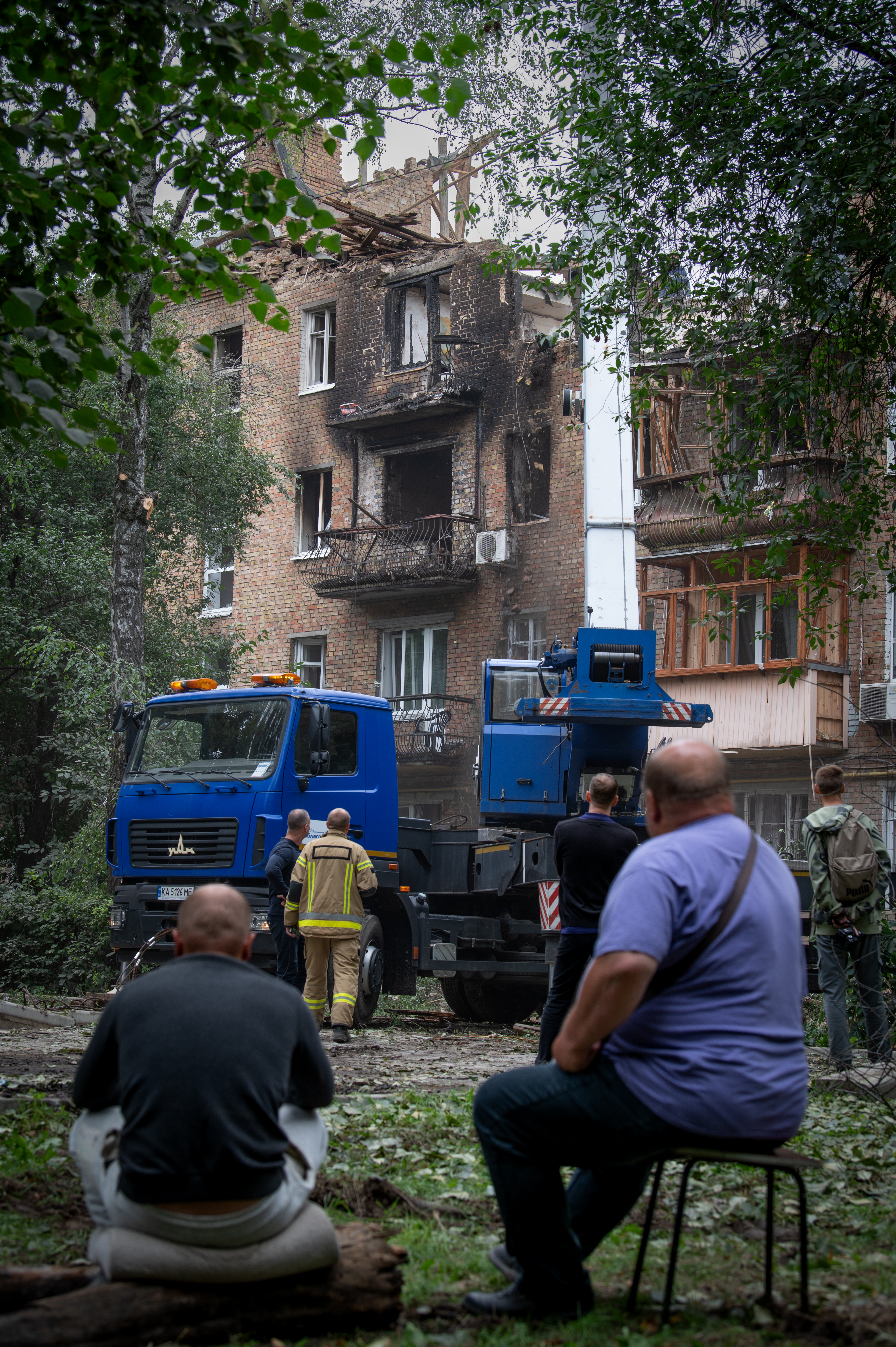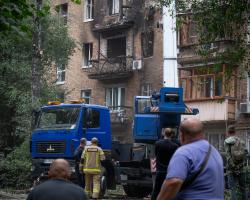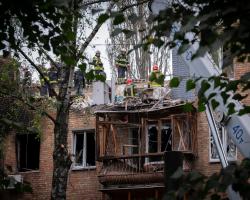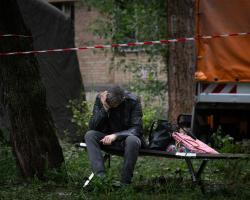Kyiv, 31 July 2025 – The Russian Federation attacked Kyiv overnight Wednesday with loitering munitions and cruise missiles, causing many civilian casualties in homes across the city, the UN Human Rights Monitoring Mission in Ukraine (HRMMU) said today.
“Last night’s horrific strikes shattered families, with reports of at least eleven civilians killed, including a six-year-old boy, and over 130 injured, among them children,” said Danielle Bell, Head of HRMMU. “Our team visited incident sites today and saw homes reduced to rubble and residents waiting anxiously as rescuers searched for those still missing,” she added.
In Sviatoshynskyi district, a missile destroyed an entire section of a nine-story apartment building. At the site, rescue efforts were continuing, and residents whose homes had been destroyed were receiving humanitarian assistance. Human rights monitors spoke with people who were waiting as emergency workers continued to search for their relatives believed trapped under the rubble.
Witnesses described shock at the strike, which happened so fast that they did not have time to seek shelter. Windows in at least five neighboring buildings were shattered by the intense blast. In Solomianskyi district, a five-story apartment building was severely damaged. At least two people were killed there, and a number of others remain missing.
“With at least 27 locations affected across four districts in a single night, the scale of the destruction is alarming,” Bell said. “Homes, businesses and public buildings are being destroyed, and it may take years to rebuild them. And each new attack compounds the psychological toll on people who have to spend night after night in shelters.”
In its monthly update on the protection of civilians, HRMMU reported that in June, the Russian Federation launched 10 times more missile and loitering munitions attacks against Ukraine compared with June 2024.
It was the highest monthly civilian toll in Ukraine in three years, with 232 killed and 1,343 injured. Preliminary data from July indicates that this alarming pattern has continued, with widespread attacks affecting areas close to but also far from the frontlines.




